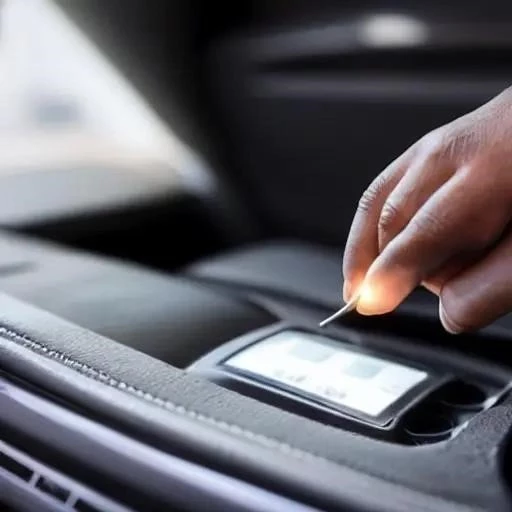For decades, a blinking ‘Check Engine’ light on your dashboard was a harbinger of dread, a cryptic signal often leading to expensive, uncertain trips to the mechanic․ Drivers frequently faced a perplexing mystery, grappling with vehicle issues that felt like an indecipherable language․ This era of automotive anxiety, however, is rapidly drawing to a close, supplanted by an age of clarity and empowerment․ We are witnessing a profound shift in how we understand and maintain our vehicles, moving from reactive guesswork to proactive, data-driven precision․
At the heart of this transformative revolution lies an unassuming yet incredibly powerful device: the car engine scan tool․ Far more than a simple code reader, these sophisticated instruments act as your vehicle’s digital interpreter, delving deep into its onboard computer system to extract crucial diagnostic information․ By translating complex electronic signals into understandable insights, these tools empower everyone—from seasoned professionals to enthusiastic DIYers—to pinpoint issues with remarkable accuracy, thereby saving time, money, and considerable frustration․ They are, in essence, the modern stethoscope for your vehicle’s technological heart, listening intently to its digital pulse and revealing its deepest operational secrets․
| Aspect | Description |
|---|---|
| What is a Car Engine Scan Tool? | An electronic device connecting to a vehicle’s On-Board Diagnostics (OBD-II) port to retrieve diagnostic trouble codes (DTCs), live sensor data, and other critical information from the Engine Control Unit (ECU)․ |
| Key Functions | Reads and clears DTCs, displays live data streams (e․g․, RPM, coolant temp, fuel pressure), checks emission readiness monitors, performs specific system tests (e․g․, ABS, SRS depending on tool), and provides freeze frame data․ |
| Types of Scan Tools | Basic Code Readers (entry-level), Mid-Range OBD-II Scanners (more features, graphical display), Professional Diagnostic Tools (dealer-level capabilities, multi-system scanning, bi-directional control), and App-Based/Bluetooth Dongles․ |
| Benefits for Drivers | Early fault detection, cost savings on repairs, improved vehicle safety, enhanced fuel efficiency, reduced emissions, ability to perform basic diagnostics at home, and informed decision-making for professional repairs․ |
| Future Trends | Integration with AI for predictive maintenance, cloud-based data analytics, wireless connectivity (Wi-Fi, 5G), augmented reality for guided repairs, and advanced telematics for fleet management․ |
| Reference Link | OBD Clearinghouse ౼ OBD-II Resource Center |
The journey of automotive diagnostics began modestly, evolving from simple test lights and multimeters to the sophisticated digital interfaces we know today․ The pivotal moment arrived with the standardization of On-Board Diagnostics (OBD-II) in the mid-1990s across all light-duty vehicles sold in the United States, soon followed by global adoption․ This crucial regulatory mandate provided a universal language for vehicles, enabling the car engine scan tool to access vital data previously locked away․ Early versions were clunky, providing only basic error codes․ However, propelled by relentless technological innovation, modern scan tools now offer graphical real-time data, freeze-frame snapshots of conditions at the moment a fault occurred, and even bi-directional control, allowing mechanics to command vehicle components directly for testing purposes․
Industry experts universally laud the profound impact of these devices․ “Scan tools have transformed our profession,” states Sarah Chen, a veteran automotive technician and instructor at a leading vocational college․ “We’ve moved from swapping parts based on educated guesses to precise, data-driven problem-solving․ This not only makes repairs more efficient but also significantly more accurate, ultimately benefiting the customer with reliable fixes․” Fleet managers, too, are leveraging advanced diagnostics for predictive maintenance, anticipating potential failures before they lead to costly downtime․ By integrating insights from AI-driven analytics with real-time data streaming from car engine scan tools, businesses are experiencing unprecedented operational efficiencies and substantial cost reductions across their vehicle fleets;
Beyond the professional garage, the democratization of diagnostic power is empowering everyday drivers like never before․ Imagine proactively identifying a minor sensor malfunction before it escalates into a major engine problem, preventing a breakdown on a remote highway․ This ability to ‘listen’ to your car’s internal monologue fosters a remarkable sense of control and confidence․ Furthermore, by understanding the precise nature of a vehicle’s ailment, consumers can engage more knowledgeably with repair shops, ensuring transparency and fair pricing․ The environmental advantages are also compelling: addressing issues promptly often means improved fuel economy and reduced emissions, contributing positively to air quality․
Looking ahead, the future of the car engine scan tool is incredibly bright and brimming with potential․ We are on the cusp of an era where these tools will transcend their current capabilities, becoming integral components of a fully connected automotive ecosystem․ Picture a world where your car communicates directly with your smartphone, offering predictive maintenance alerts based on sophisticated algorithms analyzing driving patterns and historical data․ Imagine augmented reality interfaces guiding you through simple diagnostic checks, making vehicle maintenance more accessible than ever․ The integration of artificial intelligence will not only identify problems but also suggest optimal repair strategies, learning and evolving with every data point․ This isn’t merely about fixing cars; it’s about fostering a safer, more efficient, and profoundly intelligent relationship between drivers and their vehicles, ensuring smoother journeys for everyone on the road․






